Amazon No Chekout Button Only Continue Shopping
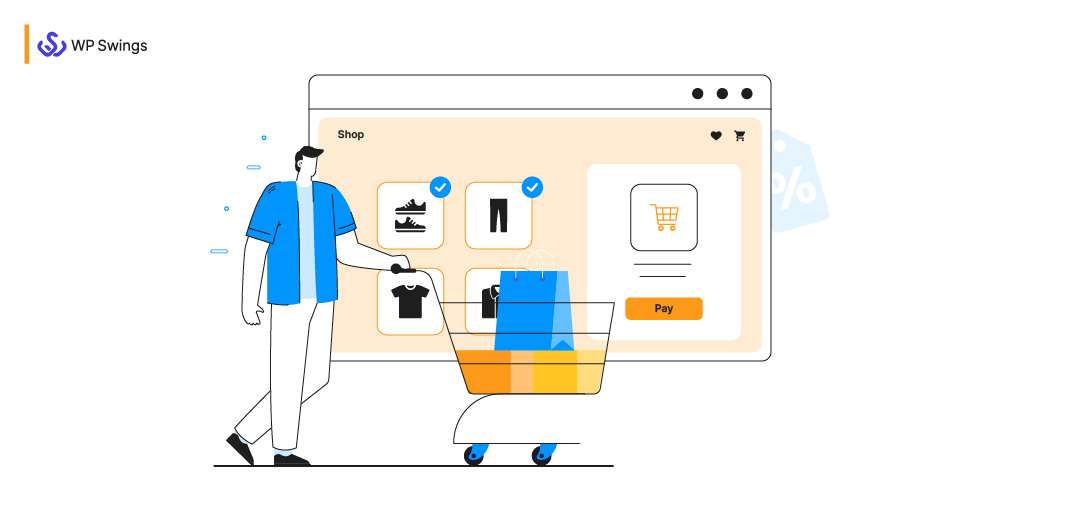
With the ever-rising technology and automation, eCommerce is also surging. eCommerce Checkout Flow is a crucial aspect in increasing conversions. We will learn about the same in the following blog!
eCommerce retail sales amounted to 4.28 trillion US dollars in 2020 and this data is projected to grow to 5.4 trillion US dollars in 2022, thus gradually replacing the conventional buying/selling method that started since time immemorial.
If you are engaged in the eCommerce business, you may have observed that, even if analytics reveal high traffic and visitors have their carts loaded with products, still your revenue is below expectations.
High traffic could be reasoned out with window shopping but what is it with cart abandonment?
Why do visitors abandon their online shopping cart so massively?
If you ask Google, here's what you get:
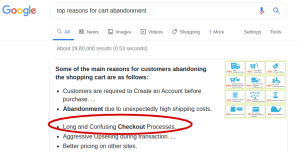
Well! There are many reasons for online cart abandonment. Some are inevitable, while others are avoidable and eStore owners can prevent them by using proper strategies.
I once added two books to my shopping cart, and a moment later, before I could finish the checkout, my roommate broke the news of our college holiday commencement. Then and there, I skipped the order and started booking home tickets.
Sometimes, people abandon their shopping carts just because they are moody. And there's nothing you can do about it.
Top eCommerce websites, on average, convert 23 out of 100 unique visitors
That's a good score, as people don't always visit to buy. They are either just browsing to expand their knowledge or experimenting for future purchases.
In such cases, the store owner cannot do much and has to accept their fate anyways.
But:
Not all reasons for cart abandonment are fate-based. Some are based on mistakes. A leaky eCommerce checkout flow design of your eCommerce store is one of the major reasons that lead to cart abandonment, and eventually low revenue. You can certainly avoid this.
Once a visitor adds anything to their cart — it's a clear indication that they could become a potential buyer.
Losing such prospects may solely be your oversight.
Checkout flow design is the most critical point to care about; a must for every eCommerce business to survive.
Why Is Poor Checkout Flow The Riskiest Reason For Online Cart Abandonment?
There are several reasons for online cart abandonment. Here's a list of major reasons:
- Ineffective pre-checkout process.
- An unexpected rise in overall cost (after adding shipping and other costs).
- Experimenting for future purchases.
- Payment security isn't trustful.
- Website crashed or incident of error.
- The buyer found a better price somewhere else.
- No cash on delivery(COD) is available.
- The site requires you to create an account.
- Too long/complicated checkout process.
The reasons why poor checkout flow is a barrier for your eStore performance are as follows:
-
- Checkout flow is a fundamental process of online purchases. Any shortcoming to this process is a fault in the overall purchase process and affects the entire mechanism of your online selling.
- A poor checkout flow will ruin the experience of every user. Every buyer must follow the checkout flow to buy the product and so if you employ a poor checkout, it will be a common irritation to each of them.
- A poor eCommerce checkout flow will impact every product purchase. Every product that you sell on your website will have to follow the steps in the checkout flow in order to complete the purchase process. Hence, a poor checkout will risk ALL the products.
- Checkout is concerned with money and hence your buyers are seriously cautious about it. Your buyers are very concerned during making payment and hence a shaggy non-impressive and long checkout will demotivate them to complete the purchase. As a result, they will abandon it even if they have an impulsive desire for the product you are offering.
So, don't take the risk. Design an impressive, simple, and trustful checkout flow for your eStore.
But, before jumping straight to the guidelines to design checkout flow, let's first understand the checkout flow better.
What Is An eCommerce Checkout Flow?
eCommerce checkout is the final touch to your website's purchase process.
During checkout, both the ends involved in the business check their pockets and pass on information to each other.
Two remarkable things happen during the checkout process; visitors turn into buyers and a shift in product ownership occurs.
Visitors turning into buyers is simply a conversion. And this conversion is the only thing that makes money for the business.
A checkout flow is a series of steps that a prospect needs to follow in order to pay for the product they want to buy.
Let's go through each step of the checkout flow briefly.
Major Steps In An eCommerce Checkout Flow
Checkout flow begins with an "Add to Cart" click and ends after payment (or Thank You page). Each of these steps must be designed for a seamless journey of the buyers, keeping the buyers motivated for purchase.
A seller targets two things in the checkout flow process:
- Obtain customer's information such as name, email, shipping address, phone number, gender, etc. for running personalized ads, promotional outreach or, convenience in future orders.
- Make customers pay for the product they choose and collect their payment information.
Ideally, the checkout flows should involve the following steps:
Pre-checkout Process
As much as the checkout process is important, so is the pre-checkout stage. You should always begin with encouraging decision-making on the product page itself.
Providing all the crucial information a buyer would dig for on the product page plays an important role to help your customers arrive at the decision sooner.
Add to Cart
Adding products to cart — a clear sign of potential buyers, the first step in the checkout process.
Visitors with buying intentions add their chosen products in the cart. They are serious about the purchase, unlike other browsing users.
As a store owner, affix your eyes upon them. They are the ones who will hand over their money to you.
Billing Info
In this step, the store owner produces a well-published and organized receipt with information such as product name, cost, and the number of products, etc. along with delivery charges and the total amount.
It is important for maintaining transparency amongst both sides.
Want to Allow Your Users to Download Your Posts and Products in PDF Format?
Shipping Info
In this step, information such as shipping address, category of shipping (timing package), etc. are entered by the buyer.
This information is used for delivery purposes.
Shopping Method
Buyers choose the mode of payment in this step. They can choose any of the options such as online payment, internet banking, online wallets(like Paytm and Amazon Pay), or cash on delivery which is available on your website and based on their convenience.
Secure Payment
Buyers who don't opt for COD (cash on delivery) undergo this stage.
This is the most critical stage of the checkout flow. Here, the prospect pays to transfer the total cost value of the product to the seller using the payment gateways.
Visitors add their card details, verify the purchase through OTP(One-Time Password), and then click for payment.
Setup Seamless Payment For Your WooCommerce with Our Wallet Plugin?
Confirmation
This step takes the final consent of your buyers for the payment.
This confirmation is very necessary as it avoids jerks in the buyer's mindset.
Even if the customers are ready to pay, that doesn't give you the right to pull out money from their wallets.
Let them do it for you with no compulsion.
Thank You Page
Checkout flow without a "Thank you page" is shutting the door on the buyer's nose.
Technically, buying/selling products can be accomplished without this, hence few refer to it as optional. But for me (and for an effective checkout flow), a "Thank you page" is mandatory and must not be ignored.
It's a good practice to include the "Thank you page" in the checkout flow. It gives a firm confirmation of the completion of the purchase to the buyers.
This page reflects your gratitude to the customers for buying your product from your eStore which is crucial for personal bonding in the mid-professional expedition.
eCommerce Checkout Flow Design Guidelines for High Conversion
About 28% of the cart abandonment is just because of the lengthy or tricky checkout process during purchase.
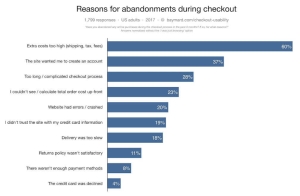
Image Source: Baymard Institute
Are you willing to take this risk?
I hope not and if that's the case, then pay special attention to designing an effective UX-centric checkout flow for your eCommerce store.
As discussed earlier, the end of the checkout flow is where you actually earn money. Therefore, it must be flawless. It must be smooth and convincing for your visitors.
In this article, we will discuss ways for checkout flow design, which would possibly increase your conversion and revenue.
(Note: This article displays a lot of examples and screenshots from eCommerce giants such as Amazon and Flipkart but the strategies discussed here stand true for all online stores.)
Although a product page is not a part of the checkout flow, it is still crucial. Because a good product page layout drives visitors in the checkout flow.
Forget your checkout process, even a shaggy product page may fail to build interest among buyers for your product.
Amazon and Flipkart are top eCommerce websites and their product pages, as you can observe, are well crafted — visuals, as well as written specifications, are clear and compelling.
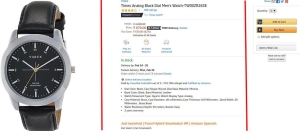
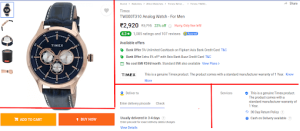
In my personal opinion, Amazon uses a much simpler layout and looks more convincing whereas Flipkart uses a multi-panel layout and looks a little chaotic at the first instant.
I hope this clears the majority of the checkout basics for your readers.
Let's dive straight to the main designing strategies that we need for a powerful checkout flow:
1. Make your "Add to Cart" Page Eye-catching
Don't make your visitors struggle to start purchasing.
Once your customer likes something, they want it quickly. Make your "Add to Cart" button look distinct and clearly noticeable.
Here are some examples of how Snapdeal and Amazon display their "Add to Cart" button:
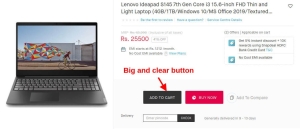
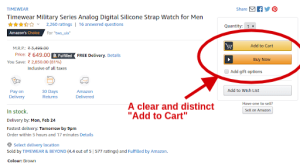
This is not all.
Once the users click and add any product to their cart, there must be a way to directly access the cart anytime during browsing.
Allowing your users to manage their cart willingly is a good practice.
Sometimes products get accidentally added to their carts and sometimes their minds change. For all such cases, users must have the liberty to remove products from their carts. Don't enforce your ways, only motivate buyers.
Amazon and all other eCommerce websites provide the facility of removing products from the cart.
Here's an example from Amazon:
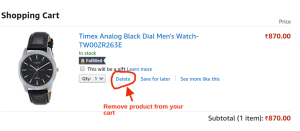
Keeping an empty cart prevents users from having frequent reminder emails. It also helps them to distinguish between their interested and not-interested products.
2. Preparing a Transparent Billing Page
Don't fool your customers in any way. Avoid playing tricks on them.
No matter how smart you are, your customers will sense it somehow. It risks your profit in the long run.
Customers do understand it but it still works just because psychology wins over understanding and also it's so popular that customers tend to ignore it.
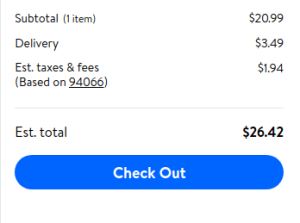
Here's how Walmart prepares its billing page.
During my above purchase, I was literally expecting the total at $24 but it comes out to be a little extra over $26.
Mind, at the first instant, assumes values after the decimal point(.) as insignificant but in reality, they do matter.
A billing page must be designed to provide all details regarding the pricing in the fairest way possible. It must clearly tell the product name, quantity along with their prices, delivery charges, tax amount, discount — if any, and finally, the clean total amount to be paid.
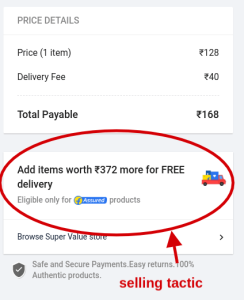
A good billing page is also capable of exciting people to buy more. The Flipkart and Amazon billing page, as shown above, provides free delivery above 500 Rs of purchase — a valid and well-celebrated technique of tempting customers to buy more.
Try Using WooCommerce RMA Plugin For Assuring Exchange And Cancellation
3. Guest Checkout and Hassle-Free Account Creation Options
Customers are diverse in nature — some create an account keenly, some want to create an account with the least effort while some don't want to create an account at all but still want to buy.
Optimize your checkout page for all.
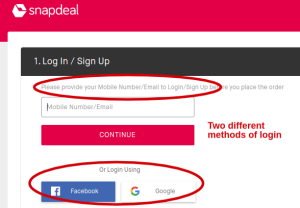
As shown above, Snapdeal provides a direct login through email or phone number for dedicated buyers whereas, for buyers in a rush, it provides a login option through Facebook and Google accounts.
There are pros and cons for logging in through social media or Google accounts which is a completely separate topic for discussion but, the thing is, a good checkout flow is always ready with every option that their customers may find helpful.
Creating an account and retaining credentials is a mental burden.
It's not just you, there are thousands of other vendors and websites demanding account creation in return for their services.
Who should decide whether to create an account or not? You or your customers?
Why not leave it to them and their choice?
Compelling your users to create an account leads to 37% of the cart abandonment.
A considerable loss. Right?
Providing them a way to complete the purchase without creating an account — you would have had 37 more sales on every 100 cart abandoners.
It's possible through guest checkout.
Guest checkout is a way of making payments without having to create an account. A customer purchasing through guest checkout just needs to provide their email for shipping-related notification, and their shipping address. All this information is available to the store owner but no account is created using them.
Allowing your visitors to buy without creating an account displays your generosity, which may impress your customers, encouraging them to create their account in the future.
4. Prioritize Payment Security
Payment is the most critical stage during purchase. Here, your buyers are cautious and hence you must ensure that your payment page is perfectly safe and secure.
Design the payment page with the original logo of the payment gateway cards. Using a brand logo of companies like Visa, MasterCard, RuPay, etc. brings confidence in your buyers.
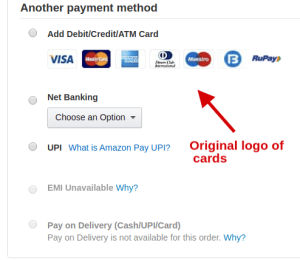
Use the word "Secure Pay" rather than simply "Pay" in the click bar. This keeps reminding your buyers that the payment is secure.
This is how Flipkart assures its buyers of payment security.

5. Use the Double "Place your Order/Continue" Click Button in the Billing Page
A billing page may become lengthy when too many products are on the purchase list. A single "Place order" button can do the task but it's the best practice to include two "Place order" buttons — one at the top and another at the bottom. This avoids your users from scrolling back to the top after checking the list.
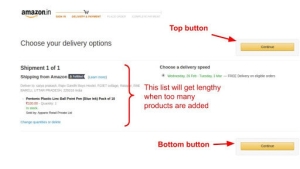
6. Don't Confuse Your Buyers During Checkout
Upsells and cross-sells are a great way to boost revenue but don't upsell or cross-sell in the middle of the payment process as this may deviate your buyers.
These marketing techniques are majorly used on product pages or cart pages but "Thank you page" can be a great opportunity to implement these.
Here's how Amazon use marketing on its "Thank you" page:
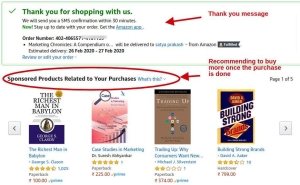
7. Provide an Overview of Checkout Steps
Buyers are anxious once they have a specific product in mind to purchase. Don't keep your buyers in darkness.
Providing an overview of how far your buyers are from the ownership of the product by depicting it through pictorial steps gives them a satellite-like view of their purchase process.
Completing each step gives them a sense of achievement.
Here's how Amazon does it:

8. Don't Eliminate Reviews and Star-Ratings in Your Checkout Flow
Adding reviews and star ratings are the best way of giving quality assurance of your product. About 91% of your buyers check reviews before they complete the purchase.
Don't eliminate reviews from the checkout flow. Place them in the most suitable step. The best place to do so, in my opinion, is the billing page (apart from the product page).
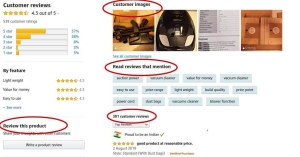
9. Optimize the Checkout Flow for Mobile Users
Your buyers, in general, spend their time more on mobile phones than on laptops or desktops, and therefore chances of making an eCommerce sale on mobile phones are more and are constantly rising. M-commerce is crucial and must not be underestimated.
By 2021, about 54% of eCommerce shopping will be done through mobile phones. Therefore, it becomes crucial to keep the checkout flow well optimized for mobile phones as well.
Keep your eCommerce perfect with perfect M-commerce particularly the checkout flow.
The dimension of the screen, the loading speed, scroll length, etc. all need to be checked and confirmed, ensuring its adaptability in mobile phones.
M-commerce is a completely separate point of discussion and is strictly important for your overall eCommerce business growth. Here's a great article on 'How To Make Your eCommerce Store Mobile-Friendly?'
Technical Enhancements For Efficient eCommerce Checkout Flow
Here are some plugin-based enhancements that you can add for a more streamlined checkout process:
1. WordPress PDF Generator:
Using the PDF Generator plugin, you can significantly impact the decision-making process. You can easily circulate all the necessary product information over different channels. Converting your live WooCommerce product pages into shareable PDF files. This will boost your decision-making stage.
2. Streamline Your Returns, Refunds, and Exchange:
Using the WooCommerce RMA plugin, you can build an easy interface for returns, exchanges, and cancellations on your online store. This will be a reassuring factor for your customers.
3. Use of Checkout Bots:
Now this one is an interesting concept. Having an active chatbot while checking out will help your customers get the answers they need right at the moment.
4. Post-Checkout Offers:
While a thank you page is important, you want to sound welcoming to your converted customers. Believe me, they are the most precious contributors to the revenue of your business. Using these offers, you can save your customers from further product hunting. Adding relevant categories and an easier one-click checkout process gives a relaxing shopping experience.
Are You Looking To Start Upselling Effectively On Your Store?
Bonus Tip: Filling The Gap Of Cart Abandonment With Email Marketing Automation
In the above discussion, we have gone through the designing guidelines of an eCommerce checkout flow for online stores.
But by no means cart abandonment can be eliminated completely. So, even after employing the best checkout flow to your online store, adopt cart abandonment recovery strategies as well, for maximizing the revenue.
Now:
There are several abandoned cart recovery strategies but the most effective of them is sending recovery emails to the cart abandoners.
It is cost-effective and the automation technique makes it a really simple and quick process.
All you have to do is to customize a ready-made email template with an engaging subject line and feed up the contact list of cart abandoners and set the frequency of the emails that have to be sent. And rest will happen on its own, automatically, if you use an automation plugin.
Every time, any cart is abandoned, a series of set emails will be sent with fixed frequency and time.
Wrapping Up
The above-discussed guidelines for best checkout flow design is a MUST FOLLOW rule for the growth of your eCommerce store/website.
If you have noticed during your schooling days,
It hurts more when you fail an exam after serious preparation than when you fail without preparation.
Similarly in the eCommerce world, losing your potential buyers is more disheartening than losing window shoppers.
A single bump in the checkout flow or a little complication may ruin the buyer's mood leading to the cancellation of the order or cart abandonment.
A well-designed checkout flow prevents you from losing the winning game.
Above all, perfection is a journey and not a destination. There is always room for improvement. The points shared in this article for designing checkout flow are not the end of it. You can add your own ways and test it if it works out, share it with the world. Because sharing knowledge is wisdom.
Feel free to write a comment or connect with our support team to get all your queries answered.
Related Posts
-
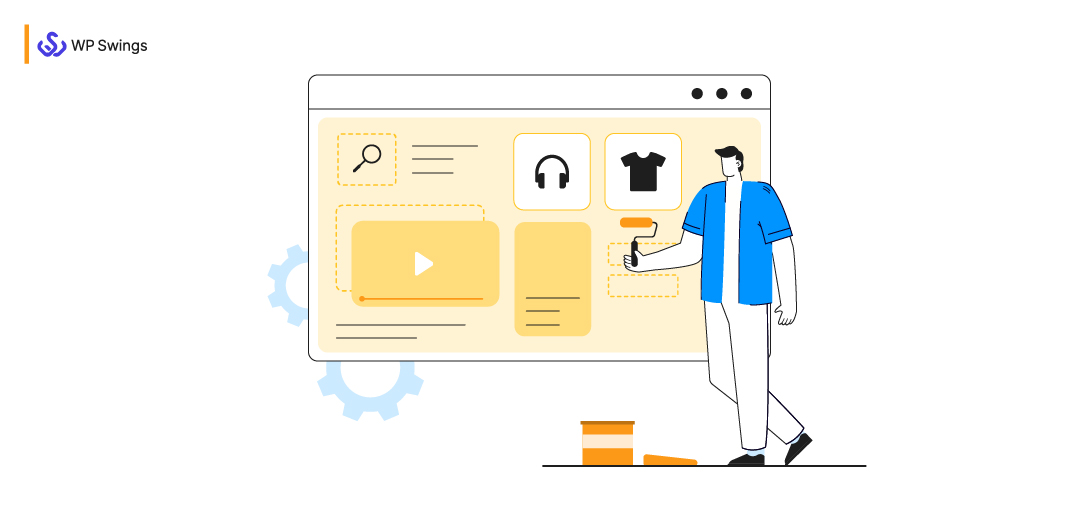
"A brand isn't what we tell customers. It's what customers […]
-
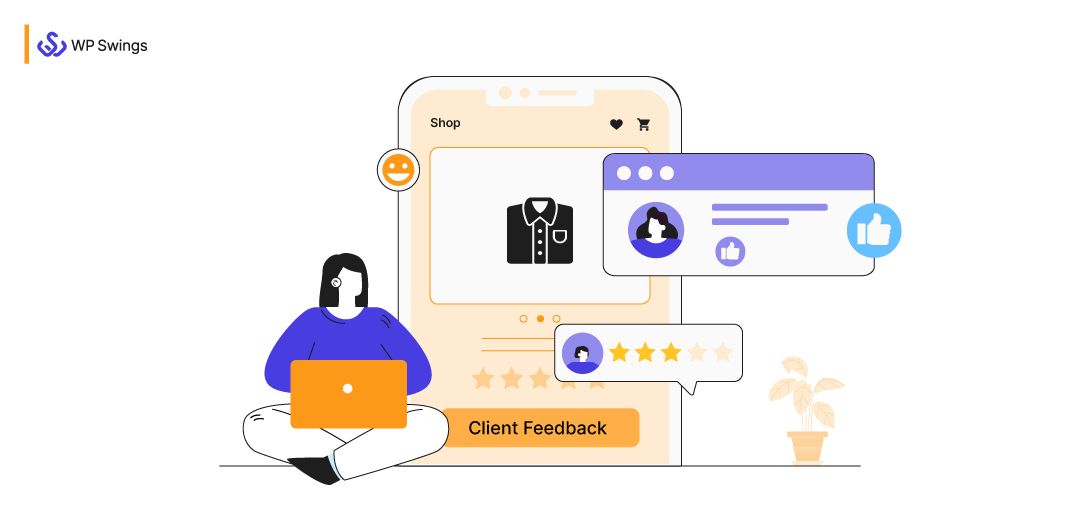
For making your WordPress business successful, it is extremely significant […]
-
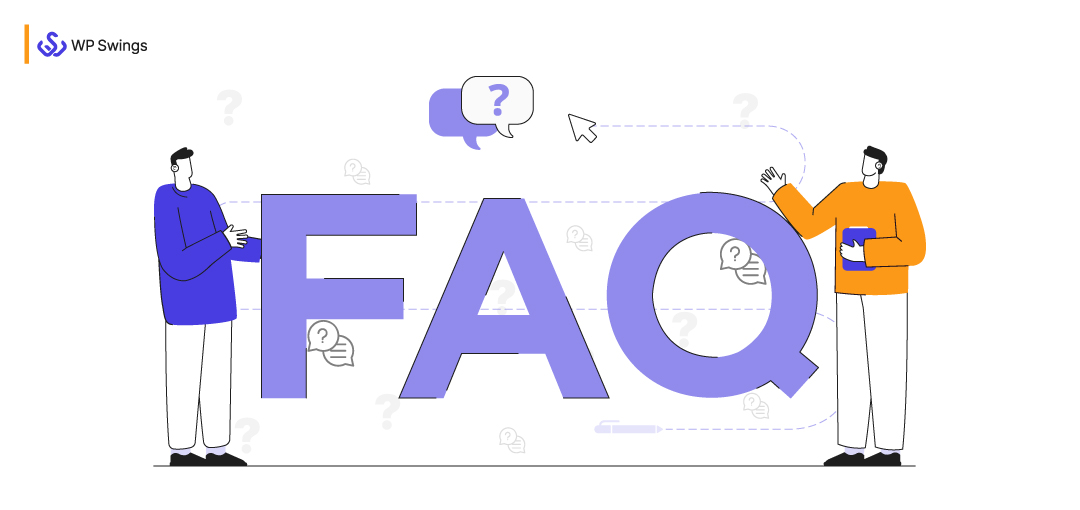
"Asking questions is the first way, to begin with, the […]
-
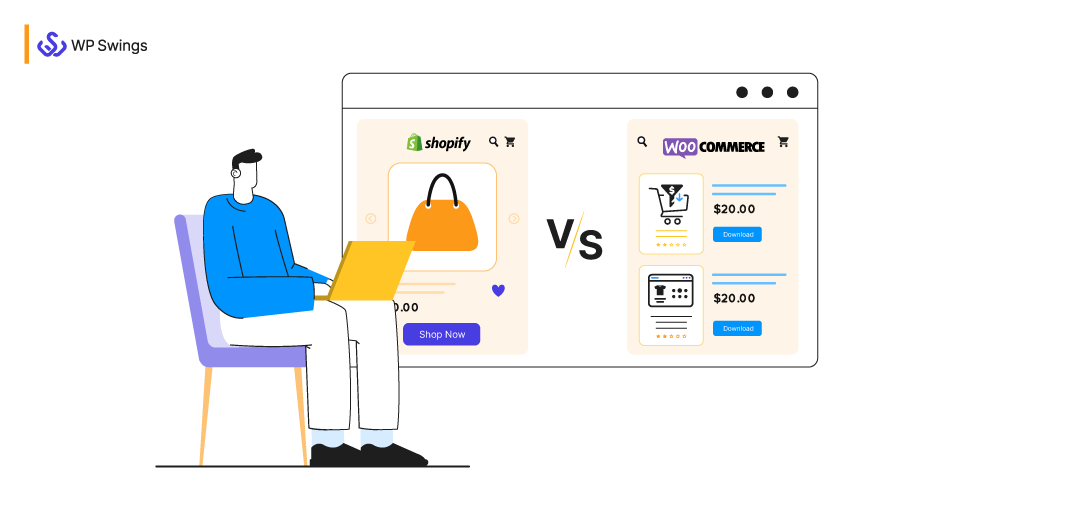
Are you planning to start an eCommerce store? I would […]
Subscribe to our blog, receive the best tips, and stay on top of your WordPress game.
Title
Source: https://wpswings.com/blog/ecommerce-checkout-flow/
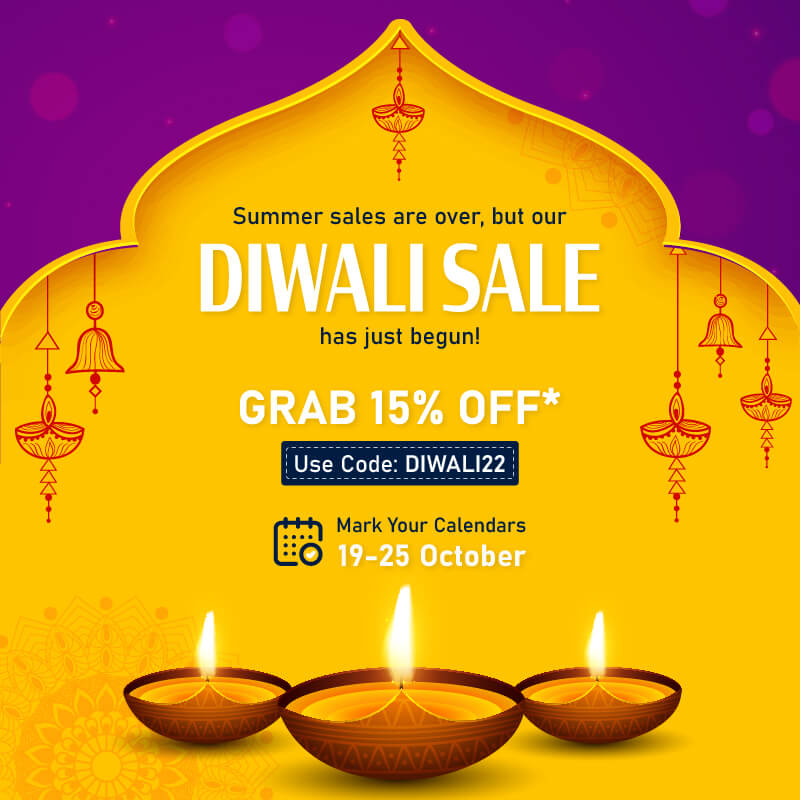
0 Response to "Amazon No Chekout Button Only Continue Shopping"
ارسال یک نظر